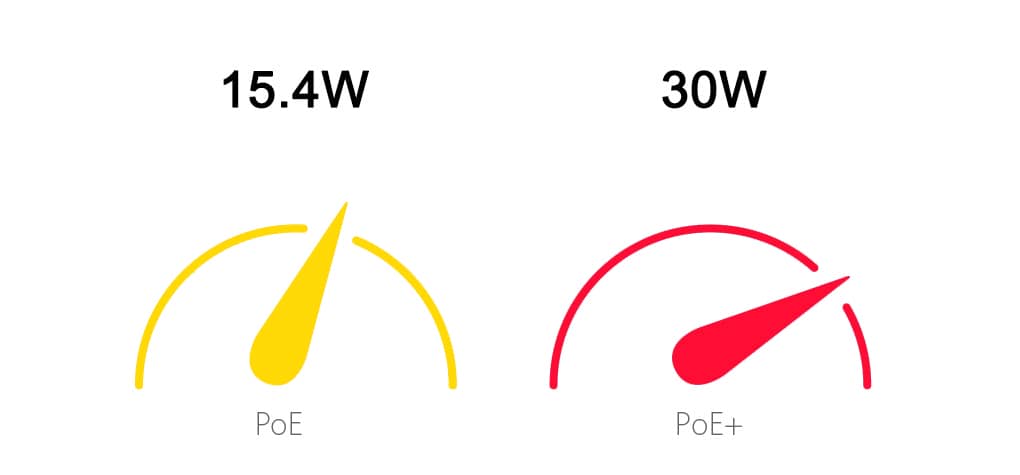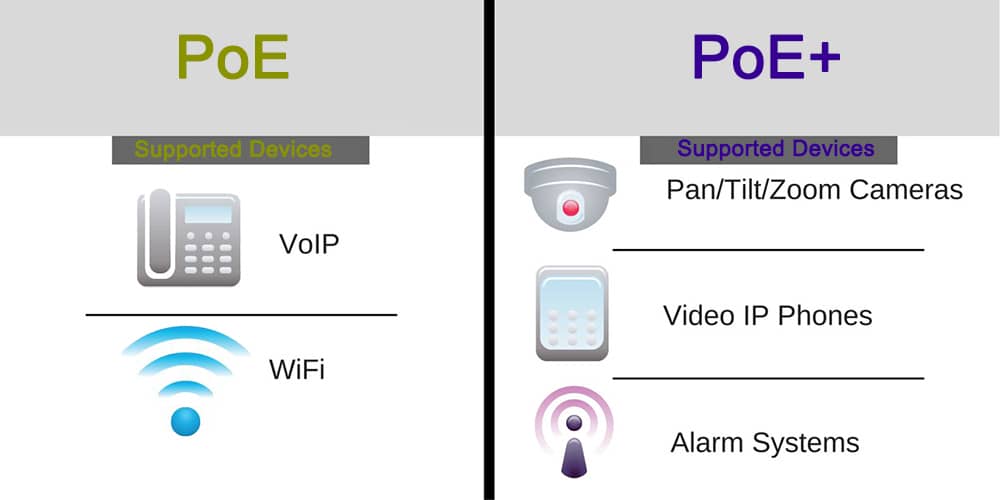PoE Switch vs. PoE+ Switch: Which is Right for Your Network?
 terry11
terry11
Understanding PoE Switch and PoE+ Switch
In the realm of networking, Power over Ethernet (PoE) technology has revolutionized the way devices are powered and connected. It enables the seamless transmission of both data and electrical power over a single Ethernet cable, eliminating the need for separate power sources. This section will delve into the fundamental concepts of PoE switches and introduce their advanced counterpart, PoE+ Switches.
What is a PoE Switch?
Basics of Power over Ethernet
PoE Switch is a network switch that integrates Power over Ethernet functionality, allowing it to deliver electrical power alongside data through standard Ethernet cables. This innovative capability streamlines the deployment of network devices such as IP cameras, wireless access points, and VoIP phones by eliminating the necessity for individual power adapters.
How PoE Powers Devices
By leveraging a PoE switch, compatible devices can draw power directly from the Ethernet cable, simplifying installation and enhancing flexibility in device placement. This not only reduces infrastructure costs but also facilitates remote powering in locations where traditional power sources are impractical or inaccessible.
Introduction to PoE+ Switches
The Evolution from PoE to PoE+
As network demands evolved, so did the need for more robust power delivery solutions. This led to the development of PoE+, an enhanced iteration of traditional PoE technology. With increased power capacity and efficiency, PoE+ addresses the limitations of its predecessor while catering to a broader range of power-hungry devices.
Enhanced Capabilities of PoE+
PoE+ switches boast higher wattage support per port compared to standard PoE switches, enabling them to accommodate devices with greater power requirements. Additionally, they adhere to IEEE 802.3at standards, providing improved energy management and more sophisticated power allocation mechanisms.
Key Differences Between PoE Switch and PoE+ Switch
When comparing Power over Ethernet (PoE) and PoE+ switches, it is essential to understand the key disparities in their power supply capacity, supported devices and applications, as well as network design and scalability.
Power Supply Capacity

Maximum Power per Port
In a PoE switch, the maximum power per port typically ranges from 15.4 watts to 30 watts, depending on the specific model and IEEE standard compliance. This level of power delivery suffices for a wide array of low to medium-power devices such as IP cameras, wireless access points, and VoIP phones. On the other hand, a PoE+ switch offers significantly higher maximum power per port, often reaching up to 60 watts. This enhanced power capacity caters to high-power devices like pan-tilt-zoom (PTZ) cameras, video conferencing systems, and advanced Wi-Fi access points.
Total Power Budget
The total power budget of a PoE Switch determines the aggregate amount of power that can be distributed across all its ports simultaneously. Typically, these switches have a more limited total power budget due to their lower wattage support per port. Conversely, PoE+ Switches boast a substantially larger total power budget, enabling them to accommodate multiple high-power devices without compromising performance or stability.
Supported Devices and Applications

Common Devices Powered by PoE
PoE Switches are commonly utilized for powering various network peripherals such as IP phones, wireless access points, and security cameras. Their ability to deliver both data and power over a single Ethernet cable simplifies installation and reduces overall infrastructure costs.
PoE+ and High-Power Devices
In contrast, PoE+ Switches are indispensable for supporting high-power devices that demand greater electrical input. These include advanced IP surveillance cameras with heating elements or motorized components, as well as sophisticated wireless access points equipped with multiple radios and antennas. The enhanced power delivery capabilities of PoE+ switches ensure reliable operation for these demanding applications.
Network Design and Scalability
Planning for Future Expansion
When considering network scalability, the choice between a PoE Switch and a PoE+ Switch becomes pivotal. Organizations anticipating future expansion should opt for PoE+ switches to accommodate evolving technology trends and increasing power requirements of modern devices. The higher maximum power per port and total power budget of PoE+ switches provide ample headroom for scaling up network infrastructure without necessitating frequent equipment upgrades.
Considerations for Large Networks
For large-scale networks encompassing numerous high-power devices spread across expansive premises, deploying PoE+ Switches is imperative. Their robust power supply capacity ensures consistent performance across all connected devices while minimizing the complexity associated with managing separate electrical wiring systems.
Choosing the Right Switch for Your Network
As organizations evaluate their networking infrastructure, selecting the appropriate switch becomes a critical decision. Understanding the power requirements of the network and anticipating future growth are pivotal factors in making an informed choice.
Assessing Your Network's Power Needs
Identifying Powered Devices
Before determining the type of switch that best suits your network, it is essential to identify the PoE-enabled devices that will be integrated into the infrastructure. These may include IP cameras, wireless access points, VoIP phones, and other compatible peripherals. By cataloging these devices, network administrators can ascertain the total power consumption and distribution requirements.
Calculating Power Requirements
Once the powered devices are identified, calculating the power requirements involves assessing the individual power draw of each device and summing up their power consumption. This process enables organizations to determine the aggregate power demand and select a switch with an adequate total power budget to support all connected devices without overloading any specific port.
Subscribe to my newsletter
Read articles from terry11 directly inside your inbox. Subscribe to the newsletter, and don't miss out.
Written by

terry11
terry11
Engaged in network connectivity equipment for twelve years, focusing on the reliability and excellent performance of network connectivity equipment